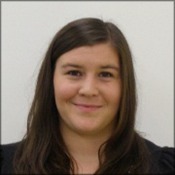Program Information
Fully Automatic Verification of Automatically Contoured Normal Tissues in the Head and Neck
R McCarroll1,2*, B Beadle1 , J Yang1 , L Zhang1 , M Mejia3 , K Kisling1 , P Balter1 , F Stingo1 , C Nelson1 , D Followill1 , L Court1 , (1) UT MD Anderson Cancer Center, Houston, TX, (2) UT Health Science Center, Graduate School of Biomedical Sciences, Houston, TX, (3) University of Santo Tomas Hospital, Manila, Metro Manila
Presentations
TU-H-CAMPUS-JeP1-2 (Tuesday, August 2, 2016) 4:30 PM - 5:00 PM Room: ePoster Theater
Purpose:
To investigate and validate the use of an independent deformable-based contouring algorithm for automatic verification of auto-contoured structures in the head and neck towards fully automated treatment planning.
Methods:
Two independent automatic contouring algorithms [(1) Eclipse’s Smart Segmentation followed by pixel-wise majority voting, (2) an in-house multi-atlas based method] were used to create contours of 6 normal structures of 10 head-and-neck patients. After rating by a radiation oncologist, the higher performing algorithm was selected as the primary contouring method, the other used for automatic verification of the primary. To determine the ability of the verification algorithm to detect incorrect contours, contours from the primary method were shifted from 0.5 to 2cm. Using a logit model the structure-specific minimum detectable shift was identified. The models were then applied to a set of twenty different patients and the sensitivity and specificity of the models verified.
Results:
Per physician rating, the multi-atlas method (4.8/5 point scale, with 3 rated as generally acceptable for planning purposes) was selected as primary and the Eclipse-based method (3.5/5) for verification. Mean distance to agreement and true positive rate were selected as covariates in an optimized logit model. These models, when applied to a group of twenty different patients, indicated that shifts could be detected at 0.5cm (brain), 0.75cm (mandible, cord), 1cm (brainstem, cochlea), or 1.25cm (parotid), with sensitivity and specificity greater than 0.95. If sensitivity and specificity constraints are reduced to 0.9, detectable shifts of mandible and brainstem were reduced by 0.25cm. These shifts represent additional safety margins which might be considered if auto-contours are used for automatic treatment planning without physician review.
Conclusion:
Automatically contoured structures can be automatically verified. This fully automated process could be used to flag auto-contours for special review or used with safety margins in a fully automatic treatment planning system.
Contact Email:

